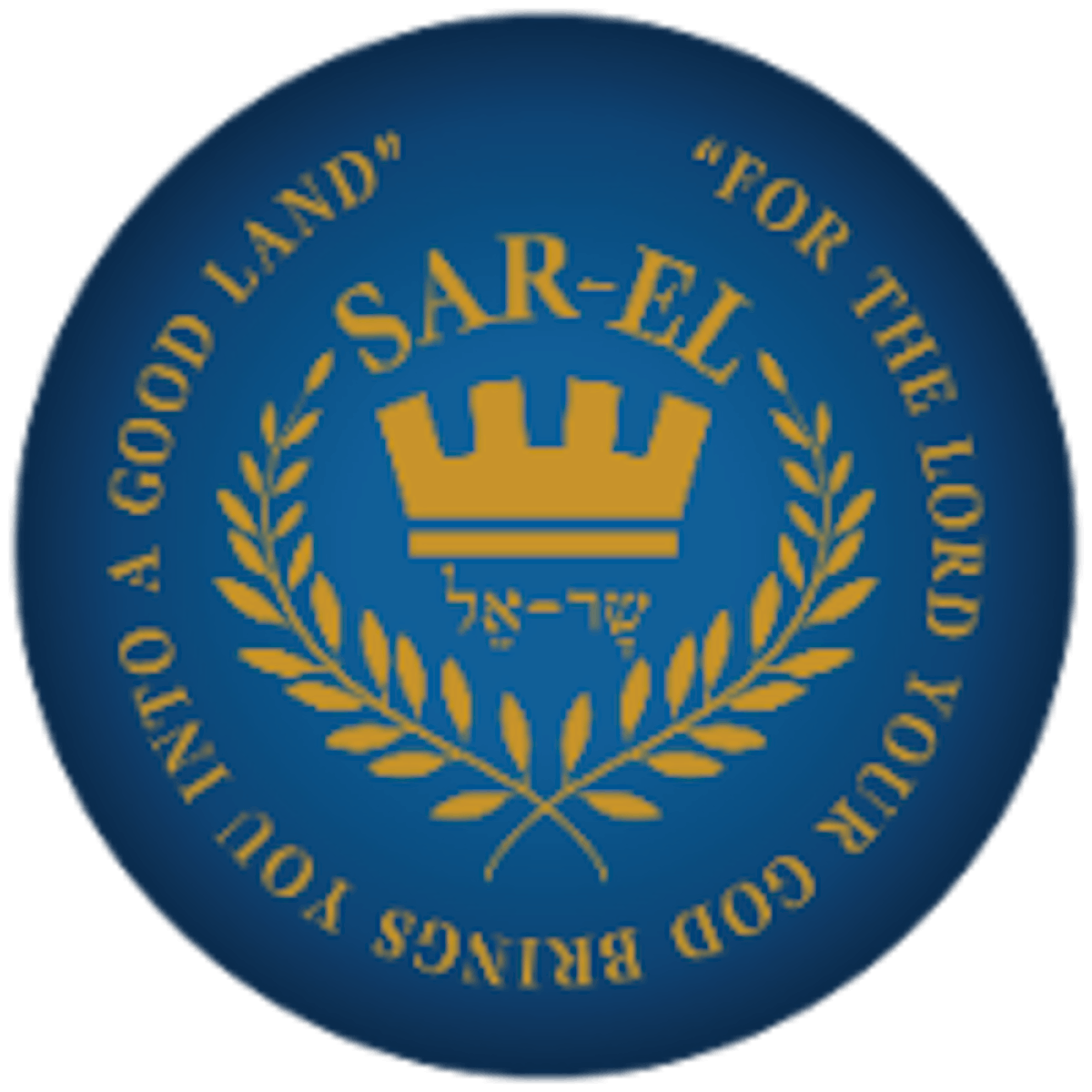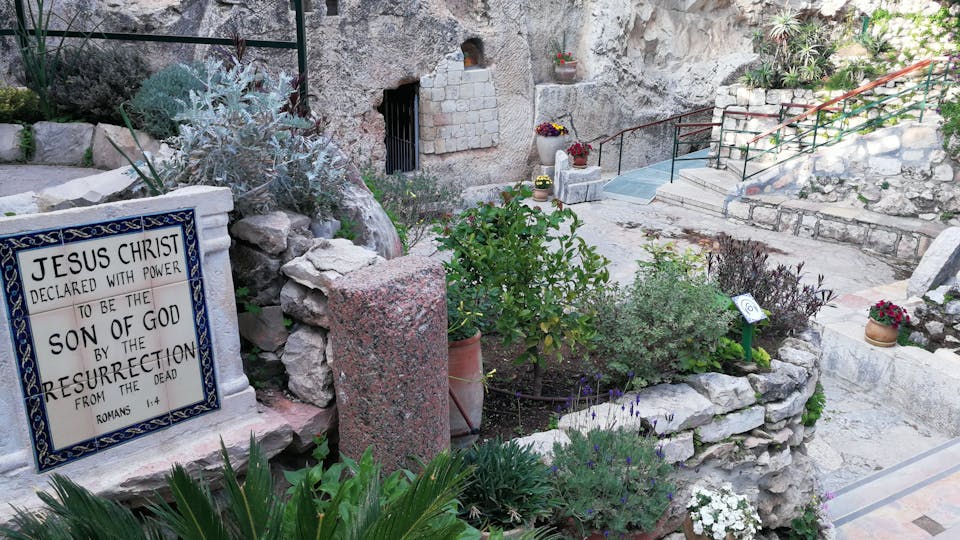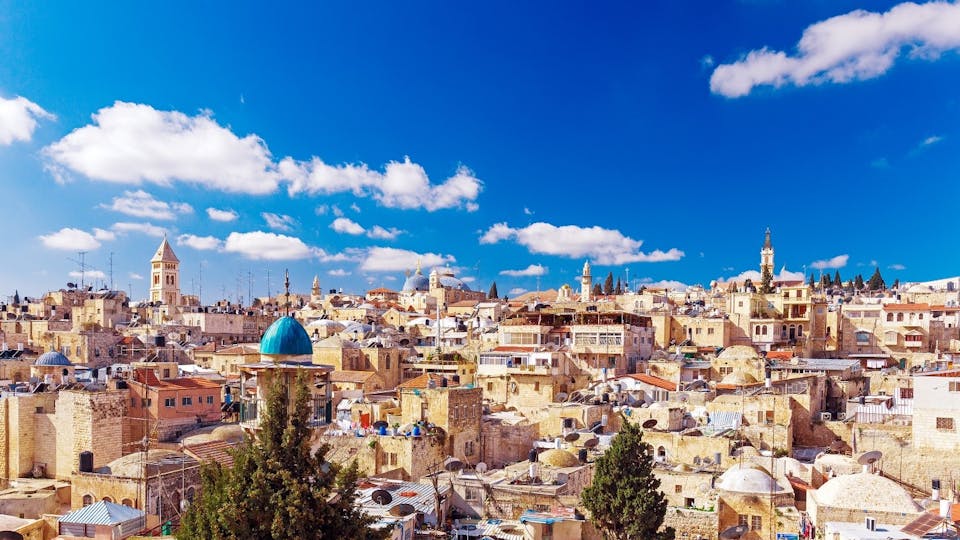The Road to Emmaus | Jesus Appearing to His Disciples

When & Where Did This Happen?
Of the three resurrection appearances of Jesus found in the Gospel of Luke, the Road to Emmaus account is the first and possibly the most detailed one.
The narrow country road leading to Emmaus, located just a short distance west from Jerusalem (which can still be walked today), stretches along the picturesque rolling hills of the Judean Mountains amidst the deep green of local pines, oaks and other native brush.
The account takes place on Resurrection Sunday, probably just a few hours following the discovery of the empty tomb by the women, and what makes it unique from the other “resurrection accounts” is that the encounter stretched for hours (possibly an entire day’s journey).
The beautiful thing about this meeting with the resurrected Jesus between the two “book-ends” of His mysterious appearance and His sudden disappearance after He broke bread at the end of the day is that He spent hours opening the Scriptures to them.
As it is written, “… beginning with Moses and all the Prophets, He explained to them what was said in all the Scriptures concerning himself.”
Contrary to some who try to disconnect Jesus from His Hebraic roots and Israelite ethnicity and feature Him as a heavenly New Testament figure detached from the lineage of Abraham, Isaac, Jacob, and the entire Jewish biblical history, Jesus Himself proves the opposite on the Road to Emmaus.
Beginning with Moses and continuing through all the Old Testament prophets, the Lord opened up hundreds of Messianic prophecies pointing to Himself.
His entire existence and purpose, from His eternal abode with Father God to His conception, birth, childhood, sufferings, death, resurrection, and ascension, all are recorded in our Bibles in plain view, and the two disciples on the Road to Emmaus got the Bible study of their lives from the master teacher Himself!

“Now that same day two of them were going to a village called Emmaus, about seven miles from Jerusalem. They were talking with each other about everything that had happened. As they talked and discussed these things with each other, Jesus himself came up and walked along with them; but they were kept from recognizing him. He asked them, “What are you discussing together as you walk along?” They stood still, their faces downcast. One of them, named Cleopas, asked him, “Are you the only one visiting Jerusalem who does not know the things that have happened there in these days?” “What things?” he asked. “About Jesus of Nazareth,” they replied. “He was a prophet, powerful in word and deed before God and all the people. The chief priests and our rulers handed him over to be sentenced to death, and they crucified him; but we had hoped that he was the one who was going to redeem Israel. And what is more, it is the third day since all this took place. In addition, some of our women amazed us. They went to the tomb early this morning but didn’t find his body. They came and told us that they had seen a vision of angels, who said he was alive. Then some of our companions went to the tomb and found it just as the women had said, but they did not see Jesus.” He said to them, “How foolish you are, and how slow to believe all that the prophets have spoken! Did not the Messiah have to suffer these things and then enter his glory?” And beginning with Moses and all the Prophets, he explained to them what was said in all the Scriptures concerning himself. As they approached the village to which they were going, Jesus continued on as if he were going farther. But they urged him strongly, “Stay with us, for it is nearly evening; the day is almost over.” So he went in to stay with them. When he was at the table with them, he took bread, gave thanks, broke it and began to give it to them. Then their eyes were opened and they recognized him, and he disappeared from their sight. They asked each other, “Were not our hearts burning within us while he talked with us on the road and opened the Scriptures to us?” They got up and returned at once to Jerusalem. There they found the Eleven and those with them, assembled together and saying, “It is true! The Lord has risen and has appeared to Simon.” Then the two told what had happened on the way, and how Jesus was recognized by them when he broke the bread.”
- Luke 24:13-35

Who were these two disciples? Luke tells us that one of them was named Cleopas, and we find in John’s gospel (19:25) that a disciple named Mary and who was Cleopas’ wife was present by the cross during the Crucifixion.
Most Bible teachers have no doubt that this couple, Cleopas and Mary, who have been faithful followers of the Lord and part of His intimate circle, were the very two who are now walking back to their home in Emmaus on Sunday morning.
Heavy of heart, they were grieving the death of their beloved Master, perplexed over the confusing accounts of the women by the empty grave, and heading back home in deep sadness.
No wonder they could not recognize Him when He joined them on the road.
Joining these two grieving disciples fleeing Jerusalem with a heavy sense of defeat and doubt in their hearts, Luke describes three unique “openings” that Jesus performed while ministering to them on the Road to Emmaus.
First, He opened the Scriptures, secondly He opened their eyes, and finally He opened their understanding.
The Word of God is always the first and primary witness for the reality of the Lord.
Remember how Jesus Himself began His public ministry? How He entered the synagogue of Nazareth on the exact Sabbath when the 61st chapter of Isaiah was to be read (according to the Synagogue cycle of the annual reading of the Bible) and claimed its profound Messianic message for Himself? He read, “The Spirit of the Lord is upon me, because He hath anointed me to preach the gospel to the poor; He hath sent me to heal the broken hearted, to preach deliverance to the captives, and recovering of sight to the blind, to set at liberty them that are bruised, to preach the acceptable year of the Lord.” (Luke 4:18-19).
The Word of God is always our principal witness of Jesus and we should never be ashamed to proclaim it!

Who Saw Jesus' Appearance?
The second “opening” (Luke 24:31) is a consequence of the first. Jesus had taught them on the way, as He will any of us along the path of life and circumstances.
But later, as He sat with them and broke bread in their home, Luke writes that “their eyes were opened, and they recognized him.” This is as true today as it was then, and as soon as we open the Scriptures to receive the teachings of the Lord and partake of the Bread of Life, God will open up our eyes by His Spirit so we too can recognize Jesus.
The third “opening” is found at the very end of the story when Cleopas and Mary are back in Jerusalem, having hurried back to share their incredible experience with the other disciples.
Luke writes that as they were sharing, Jesus Himself appeared in their midst and “opened...their understanding, that they might understand the scriptures.” (Luke 24:45). The opening of the minds enables us to understand the depth and breadth of God’s salvation story and qualifies us to share these truths with others.
With our minds opened and enlightened by God’s Spirit, we see Jesus all over the Bible, from the Seed of the Woman in Genesis to the Passover Lamb and all the other prophetic signs and shadows.
These three openings — the opening of the Scriptures, of our eyes, and of our understanding are the blessings we receive from our resurrected Lord.
We all have our own Road to Emmaus where the Lord is willing and able to teach us these truths, and we pray that by His grace these blessings are realized in your life as He joins you too during the difficult times. After all, His name is Immanuel!
Shalom from Israel!